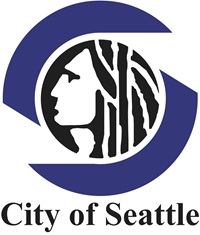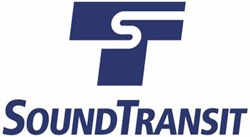More Metro in March: Added service, all-door boarding on Third Avenue, and buses say goodbye to the Downtown Seattle Transit Tunnel
Summary
In partnership with the City of Seattle, more trips will be added on key bus routes beginning March 23. Metro is encouraging riders to study new stop locations in downtown Seattle when 15 routes are redirected onto different city streets and all buses shift out of the Downtown Seattle Transit Tunnel (DSTT) in preparation for opening regional light rail extensions. To keep service moving more easily for customers, Metro is launching all-door boarding on Third Avenue.
Story
Bus service will be added on several crowded routes, including many more trips on Route 120 to Delridge, White Center, and Burien as it ramps up to become the Rapid Ride H Line in coming years. 
Other service increases include:
• Route 40: 11 additional daily trips to respond to high ridership demand, funded by the City of Seattle
• Route 50: Additional midday trips providing key east-west connections between Southeast Seattle and West Seattle
• Route 102: Two additional trips and rescheduling of service in the PM peak to relieve overcrowding.
• Route 106: Upgrade Sunday service from 30 minute to 15 minute frequency, funded by the City of Seattle
• Route 120: 10- to 12-minute service all day and improved Sunday service to 15 minutes (pre-RapidRide and funded by the City of Seattle), including 28 new weekday trips and 43 more trips on Sundays.
• Route 204: Saturday service on Mercer Island.
• Other routes with one or two added trips each: routes 15, 41, 111, 312
The last seven Metro and Sound Transit bus routes operating in the DSTT – routes 41, 74, 101, 102, 150, 255 and ST 550 – will transition to serve stops on three existing transit corridors – Second, Third and Fourth avenues – and a newly created transit corridor on Fifth and Sixth avenues. About 37,000 riders board and exit buses in the DSTT daily. The Westlake Customer Stop will close March 6 and ORCA card service will be available at other identified locations.
Starting today, details are available on Metro’s website.
Since 2015, the City of Seattle has purchased transit service through the voter-approved Seattle Transportation Benefit District. It currently invests $40 million each year to provide about 300,000 hours of Metro service. King County also is investing Metro funds to expand service. Metro has increased service by 22 percent since 2015 and has a $1.9 billion operating budget for 2019-2020, providing 4.5 million transit service hours annually.
A jointly funded $30 million investment plan by King County, Seattle and Sound Transit has focused on improving commutes for transit riders. Investments included but are not limited to:
• Investments on Third Avenue will support improved transit speeds with extended transit priority hours, all-door boarding and off-board fare payment.
• Signal improvements on Second and Fourth avenues will help buses move more quickly and improve safety.
• The new transit corridor on Fifth and Sixth avenues will provide more capacity and time and reliability for northbound buses.
• Improvements to pedestrian pathways will enhance riders’ access to transit, including improved lighting, intersections, wayfinding and other elements.
All-door boarding on the Third Avenue/Westlake Avenue corridor
The country’s most heavily-used transit corridor – Seattle’s Third Avenue – is about to get an upgrade. Starting March 23, all riders on Third Avenue will be able to pay their fare by tapping ORCA cards at fare readers at bus stops prior to boarding. This will enable passengers to board the bus via any door, not just at the front, accelerating boarding times and lessening the amount of time buses wait at each stop. Today, Third Avenue serves more than 2,500 buses on 42 routes which serve a total of more than 180,000 riders per day. About 50,000 of these riders board buses on Third Avenue each weekday.
Permanent off-board fare readers already are installed at 21 of the corridor’s 30 bus stops, and installation at the remaining nine stops is scheduled April through December 2019. Until permanent equipment is installed, transit operators will serve as ORCA boarding assistants and will scan riders’ ORCA cards using handheld fare readers at nine stops during weekday commutes between about 3:30 and 6:30 p.m., the busiest period for boarding on Third.
Like on current RapidRide service, Metro fare enforcement will require proof-of-payment on routes serving this corridor. An education period is planned March 23 through April 30. Proof-of-payment includes either an ORCA card that has recently been tapped on a reader or a paper transfer for riders who paid with cash.
New transit pathway on Fifth and Sixth avenues and other investments
New PM peak bus lanes on Fifth and Sixth avenues in downtown Seattle will form an extended transit pathway to serve as a pressure release for our region’s densest jobs center at the busiest time of day. The lanes will be from Cherry Street to Olive Way and will connect riders with Interstate 5 at Pike Street and Olive Way. The pathway already exists on Fifth Avenue south of Cherry Street, where buses connect with I-5 express lanes directly.
Transit pathways create exclusive, transit-only lanes that get turning vehicles, frequent stops, and unpredictable traffic movements out of buses' way. They boost reliability, travel speed, and capacity, which promotes the quality of the transit line and helps the system run more predictably.
Some bus routes will use different streets than today as they travel through downtown. The following routes will use a new transit pathway on Fifth and Sixth Avenues: 74, 76, 77, 252, 255, 257, 301, 308, 311 and 316.
Riders will use new transit stops on Fifth Avenue at Marion Street, Sixth Avenue at Union Street, and Pike Street at Seventh Avenue.
New right-turn signals where buses leave the new transit pathway will reduce transit delay and potential conflict between people walking and transit at crosswalks. Sixth Avenue was paved last year and will get new striping to better balance lane widths and parking for transit efficiency. The new transit pathway will be effect Monday through Friday, 3 p.m. – 7 p.m.
Installation work has already begun with traffic signal upgrades and bus operator training exercises. The streets will be restriped by early March and new bus stop signs will be added prior to the March 23 opening.
Downtown Seattle Transit Tunnel in transition
When King County opened the transit tunnel Sept. 15, 1990 for bus service, it was always envisioned as evolving into a joint operations facility and then transitioning over time to light rail service. Over the years as Sound Transit launched service and expanded frequency, several bus routes have shifted to surface streets. With upcoming Link light rail extensions and the construction underway to expand the Washington State Convention Center at the north end of the tunnel, it is time for all buses to permanently shift to surface streets.
The conversion of the DSTT to rail only will enable Sound Transit’s upcoming Link light rail expansions to create a 116-mile regional system. The next expansions will reach Northgate in 2021, the Eastside in 2023 and Lynnwood, Federal Way and Downtown Redmond in 2024.
Rail-only operations will provide immediate benefits to Link riders in the form of enabling reliable six-minute peak hour headways, eliminating significant service disruptions that occur under joint operations. Light rail service frequencies will increase in future years as the system expands, and Sound Transit will also build a second tunnel through downtown Seattle to help support later extensions to Tacoma, West Seattle, Ballard, Everett, South Kirkland and Issaquah.
With the conversion of the DSTT, King County agreed to sell the Convention Place Station property at the tunnel’s northern portal for $275 million in principal and interest over 32 years. The funds will support Metro operations and capital projects.
The Washington State Convention Center Addition project is expected to generate about $260 million in visitor spending and more than $19 million in tax revenue annually. Three years of construction will create nearly 6,000 family-wage jobs in the region, and once open the facility will be supported by 3,900 new, ongoing jobs. Plus, as part of its public benefits package, the Addition project will fund more than $93 million in community priorities including affordable housing, downtown open spaces, bike lanes and more.
In early 2020, construction inside the DSTT will connect the East Link light rail extension to the tunnel, impacting light rail service for a 10-week period. In the coming months Sound Transit will be educating riders about the temporary service impacts.
Sound Transit regional service modifications
Major service changes will be occur on three other ST Express regional routes in addition to the above-referenced change to the Route 550. Full information is available online.
• Route 513 extends to Seaway Transit Center and will continue to serve Evergreen Way via a new stop at Casino Rd.
• Route 550 will move to surface streets in downtown Seattle because of the shift to rail-only operations in the DSTT. Rail-only operations in the tunnel will increase Link light rail reliability.
• Route 555 will operate only between Northgate and Bellevue, and will no longer serve the lower-ridership segment between Bellevue, Eastgate and Issaquah. Resources will be reinvested into improving reliability on Route 554.
• Route 580 will have fewer trips; low-ridership trips will be discontinued and others will run only between Puyallup Station and the South Hill park-and-ride. Resources will be reinvested to improve service in Pierce County.
Relevant links
- Metro service change website
- Seattle traffic page
Quotes
This is our ninth service expansion in four years, as we continue to meet growing demand on high-ridership routes across the region, providing transit access where people need it most. There will be some big changes when the downtown transit tunnel converts to exclusively light rail next month, but with our partners at the City of Seattle and Sound Transit we are adding improvements to make Metro faster and easier through downtown Seattle and beyond.
In Seattle, we are building a city of the future with more access to reliable, affordable transit and more options for getting around. That’s why my budget increased funding for King County Metro service by 30 percent. As the Downtown Seattle Transit Tunnel becomes light-rail only and the buses come onto our surface streets forever, we must do more to keep those buses moving. Across the City, we’re adding more red bus-only lanes, upgrading bus stops for riders, improving traffic signals to keep buses moving, and making it safer to walk and bike. With the buses coming out of the tunnel forever, we’ll enter a new phase of the Seattle Squeeze. We’ll need everyone to continue to change their habits, get out of their cars, and keep helping make room on our roads and on our already crowded transit.
Dedicating the transit tunnel to Link will immediately improve the reliability of light rail service, and most importantly, will allow us to handle tens of thousands of additional riders when light rails reaches Northgate in 2021, the Eastside in 2023 and Lynnwood and Federal Way in 2024.
For more information, contact:
Alex Fryer, Executive Office, 206-477-7966

 Translate
Translate

